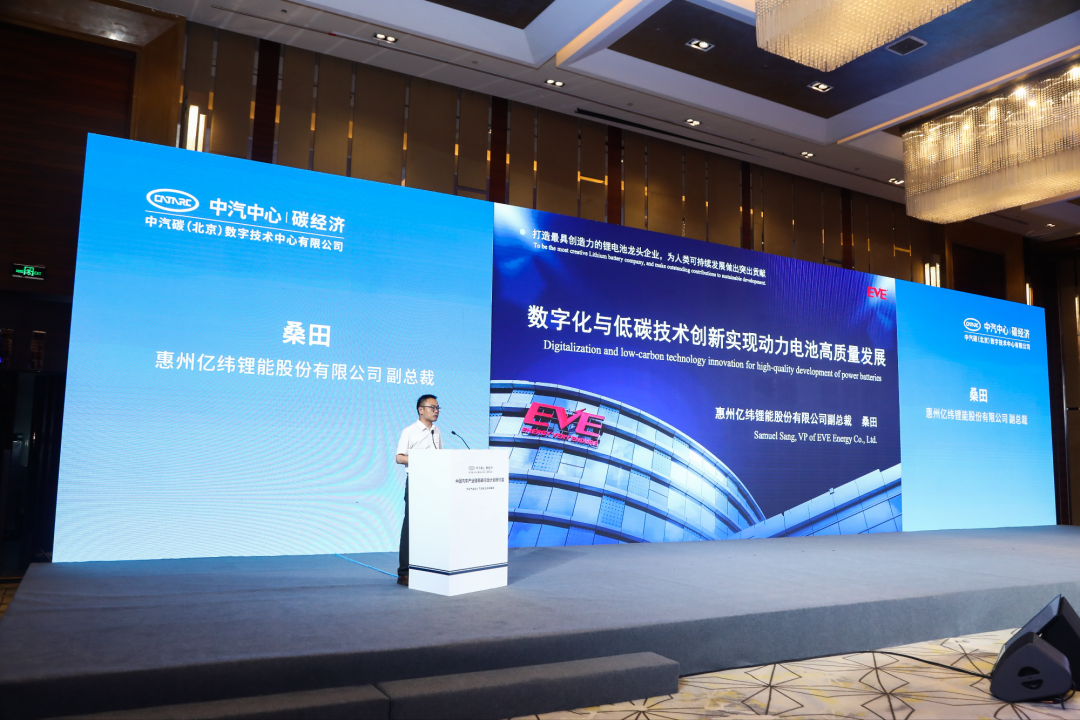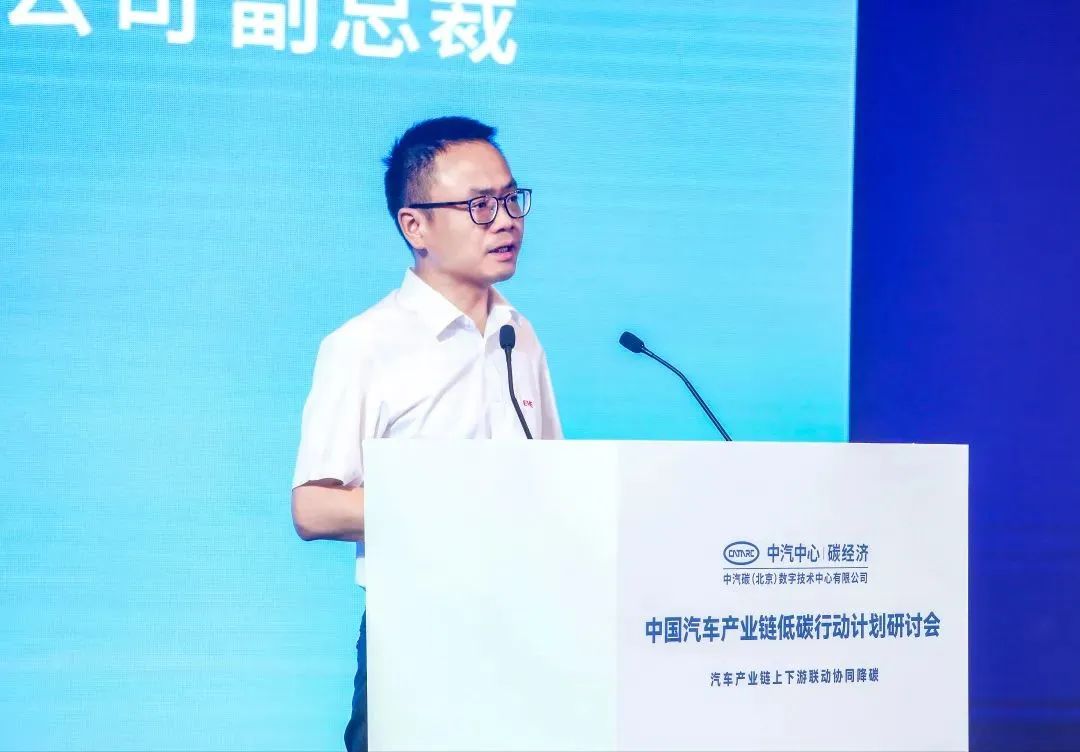 Choose a language
Choose a language
< Back to main menu
EVE attaches great importance to your personal privacy. When you visit our website, please agree to the use of all cookies. More information about the processing of personal data can be found at "Privacy Policy"
 Choose a language
Choose a language

Jun 25,2023
Recently, the 2023 China Auto Industry Chain Low-Carbon Action Plan Seminar was held in Beijing. Sang Tian, vice President of EVE, was invited to participate in the seminar, and shared experience and discussed around "digitalization and low-carbon technology innovation to achieve high-quality development of power batteries".

Sang Tian introduced that EVE has achieved carbon reduction throughout the life cycle of lithium batteries by virtue of measures such as sustainable technology innovation drive, low-carbon product design, battery recycling technology innovation, partition wall supply, and green packaging. It has also actively implemented zero-carbon factories, extreme manufacturing, water-solar-storage peak-shaving, and high-efficiency refrigeration rooms to promote green, low-carbon, and high-quality development.
Regarding "low-carbon product design", Sang Tian shared a case. Due to the large fluctuation of photovoltaic power generation, EVE developed and designed LF560K large iron lithium battery for this purpose, which can reduce the use cost of electric energy storage users by 10% and better support large-scale integration. Assuming that a 300GW photovoltaic power station is combined with a 60GWh energy storage power station, it can be equivalent to a 90GW coal power unit, which can make the wind power station equivalent to the thermal power generation in the past. At the same time, the amount of carbon reduction is also very considerable, and the annual carbon reduction can replace 110 million tons of standard coal.
With regard to "water-solar-storage peak-shaving", a large number of renewable energy devices are installed in the factory area, including photovoltaic, electrochemical energy storage and water storage projects, etc., to cut peaks and fill valleys, realize flexible load regulation, smooth energy fluctuations, reduce the peak supply pressure of social power grids, and enhance business resilience. During peak times of social electricity consumption, loads can also be sold in the electricity market. For example, during the peak period of social electricity consumption in 2022, the company participated in the "demand side response", and the revenue reached 2.49 million yuan. It is expected to support 47,000 residential households in 2023 and 99,000 residential households in 2025.

Looking forward to the current low-carbon environment of the manufacturing industry, Sang Tian also put forward some suggestions for further carbon reduction strategies in the future:
1. Hope to speed up the introduction of supporting policies for market-oriented transactions of renewable electricity, reduce market transaction costs, improve inter-provincial transaction rules, and enrich various transaction models such as "sales of electricity across the wall".
2. Hope to promote the introduction of low-carbon product regulations for the lithium battery industry, accelerate the improvement of the national standard system for the carbon footprint of lithium battery industry chain products, and add Chinese wisdom and Chinese solutions to the international trade rules of the new energy vehicle industry.
3. It is hoped that investment promotion policies for the renewable power generation industry will be introduced to strengthen the resource allocation of electrochemical energy storage power stations in the investment in the renewable power generation industry, so as to optimize the energy consumption structure and promote the decarbonization of China's power generation industry.
In the future, EVE will also continue to accelerate towards the dual-carbon goals, practice digitalization and low-carbon technology innovation, coordinate the upstream and downstream linkages of the industrial chain to reduce carbon, and help the green and high-quality development of the entire industrial chain of power batteries.
